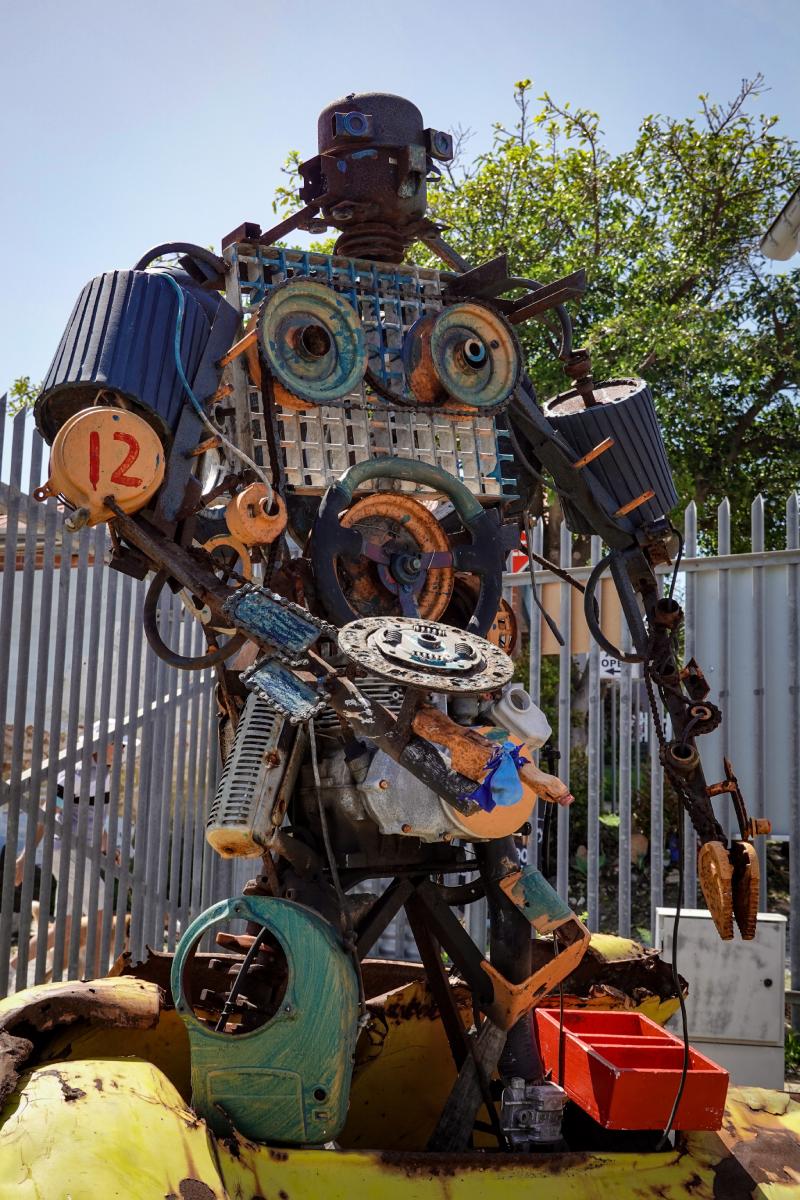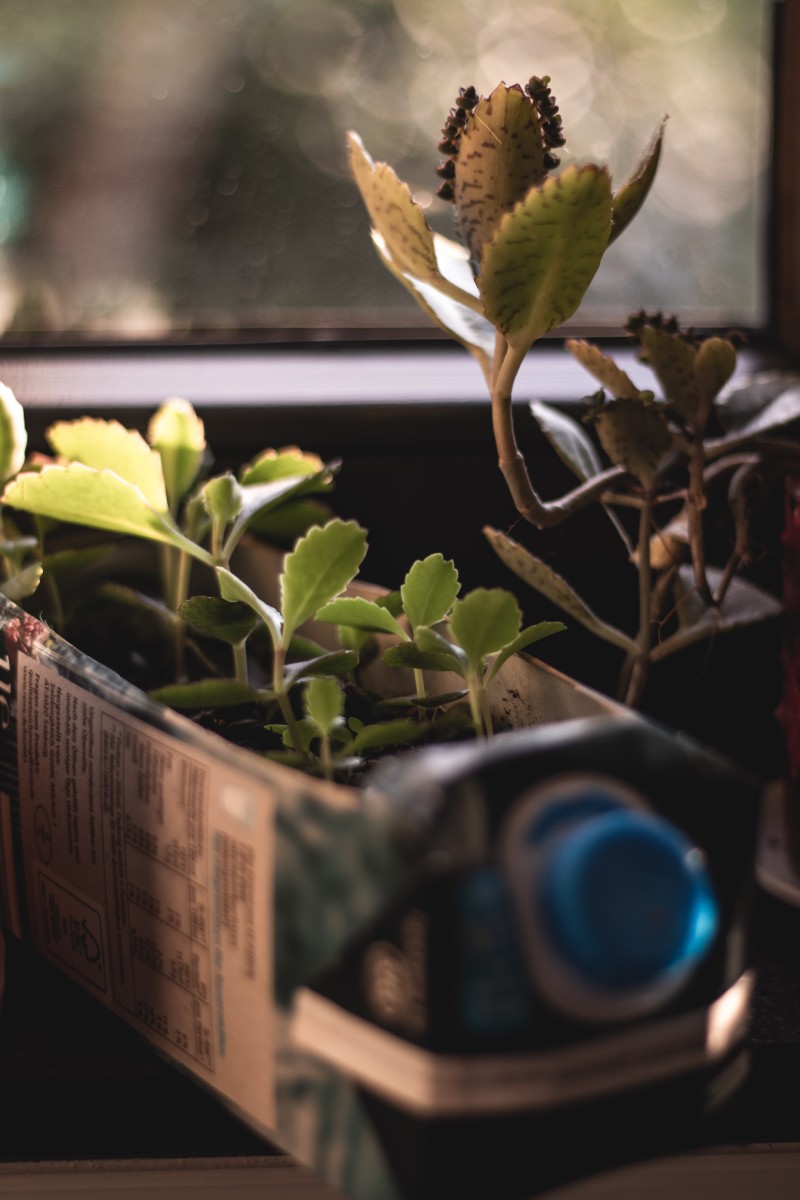Introduction
Upcycling is a creative and sustainable approach that transforms waste materials into new products of higher value. It goes beyond traditional recycling by giving discarded items a new life and purpose. In a world where waste generation is a pressing concern, upcycling offers a viable solution that promotes waste reduction, resource conservation, and environmental sustainability.
Definition of Upcycling
Upcycling is repurposing or transforming discarded materials, products, or waste into new items with enhanced value, functionality, or aesthetics. Unlike recycling, which typically involves breaking down materials to create new ones, upcycling focuses on preserving the existing qualities of the materials and finding innovative ways to utilize them. It encourages creativity and imagination to breathe new life into objects that would otherwise end up in landfills.
Importance of Upcycling in Waste Reduction and Sustainability
Upcycling plays a vital role in waste reduction and sustainability by diverting items from the waste stream and minimizing the extraction of new raw materials. As a society, we produce an immense amount of waste that poses significant environmental challenges. Landfills are filling up, natural resources are depleted, and pollution levels continue rising. Upcycling offers a practical and accessible way to address these issues.
By upcycling, we can reduce the volume of waste that goes into landfills, which helps alleviate the strain on the environment. Instead of discarding items after a single use, upcycling encourages us to see the hidden potential in what may seem like a waste. It sparks creativity and innovation, transforming discarded materials into valuable resources.
Furthermore, upcycling contributes to sustainability by reducing the demand for new raw materials. Many of these materials require extensive resources and energy to extract, manufacture, and transport. By upcycling, we can conserve natural resources, save energy, and minimize greenhouse gas emissions associated with producing new goods. Upcycling supports the concept of a circular economy, where materials and products are kept in use for as long as possible, promoting a more sustainable and resource-efficient society.
In conclusion, upcycling offers a way to rethink our approach to waste and consumption. It enables us to tap into our creativity, minimize waste generation, and reduce our environmental impact. Upcycling can transform waste into valuable resources, contributing to a more sustainable and greener future.
Environmental Benefits of Upcycling
Upcycling brings various environmental benefits contributing to waste reduction, resource conservation, and a greener future. By diverting materials from the waste stream and giving them a new life, upcycling helps alleviate the environmental impact associated with traditional waste disposal methods.

Reducing Waste and Landfill Impact
One of the primary environmental benefits of upcycling is reducing waste sent to landfills. Landfills are unsightly, contribute to pollution, and pose risks to ecosystems and human health. Upcycling prevents items from becoming waste in the first place by transforming them into usable and valuable resources. By reimagining and repurposing materials, upcycling reduces the volume of waste that ends up in landfills, helping to alleviate the strain on these facilities and the environment.
Conserving Resources and Reducing the Demand for New Materials
Upcycling plays a significant role in resource conservation. Upcycling by utilizing existing materials and products reduces the need for extracting and processing new raw materials. The extraction of resources, such as timber, minerals, and metals, often involves environmentally destructive practices, including deforestation, habitat destruction, and water pollution. Upcycling circumvents the need for these resource-intensive processes by reusing and repurposing materials that would otherwise be discarded. By extending the lifespan of materials through upcycling, we can conserve valuable resources and preserve natural ecosystems.
Decreasing Energy Consumption and Greenhouse Gas Emissions
Another notable environmental benefit of upcycling is the reduction of energy consumption and greenhouse gas emissions associated with the production of new goods. Manufacturing new products from virgin materials requires significant amounts of energy, often derived from fossil fuels. This energy consumption contributes to greenhouse gas emissions and exacerbates climate change. Upcycling helps mitigate these impacts by minimizing the demand for new manufacturing processes. Upcycling reduces the need for energy-intensive extraction, refining, and manufacturing by repurposing existing materials, reducing greenhouse gas emissions. Additionally, upcycling often requires less energy than recycling, as it avoids the energy-intensive processes of breaking down materials to their base components.
In conclusion, upcycling offers compelling environmental benefits by reducing waste, conserving resources, and minimizing energy consumption and greenhouse gas emissions. By embracing upcycling practices, we can contribute to a more sustainable and circular economy where waste is minimized, resources are conserved, and the environmental impact of production is reduced. Upcycling empowers individuals and communities to make a positive difference by transforming waste into valuable resources, fostering a greener and more environmentally conscious future.
Economic Benefits of Upcycling
Upcycling not only brings environmental advantages but also offers various economic benefits. By transforming waste materials into valuable resources, upcycling creates opportunities for cost savings, job creation, local entrepreneurship, and enhanced brand reputation.

Cost Savings and Economic Opportunities
Upcycling allows individuals, businesses, and communities to save costs. Instead of purchasing new materials or products, upcycling allows for utilizing existing resources that might otherwise go to waste. This can significantly reduce expenses associated with raw material acquisition and production. Upcycled products also tend to be more affordable for consumers, making sustainable choices accessible to a broader audience. Additionally, upcycling can create economic opportunities for individuals and businesses involved in the upcycling process, including designers, artisans, and craftspeople. Upcycling can lead to innovative business models and revenue streams by tapping into the potential of waste materials.
Job Creation and Local Entrepreneurship
The practice of upcycling has the potential to generate employment opportunities and stimulate local economies. Upcycling often involves craftsmanship, artistic skills, and creative problem-solving, creating avenues for job creation in these fields. Local artisans and entrepreneurs can capitalize on upcycled products’ unique and sustainable nature to establish small businesses or cooperatives. This decentralized approach to production contributes to local economic development by supporting local talent, fostering community engagement, and reducing dependence on large-scale manufacturing. Upcycling initiatives can also promote social entrepreneurship, empowering individuals and communities to address environmental challenges while generating income.
Enhanced Brand Reputation and Customer Appeal
Incorporating upcycling into business practices can enhance brand reputation and increase customer appeal. Consumers are becoming increasingly conscious of the environmental impact of their purchasing decisions. They are drawn to brands that align with their values. By embracing upcycling, companies demonstrate their commitment to sustainability, resourcefulness, and waste reduction. This resonates with environmentally conscious consumers who appreciate brands that actively contribute to a circular economy. Upcycling initiatives can differentiate businesses from their competitors, fostering customer loyalty and attracting a growing market segment interested in eco-friendly products. Furthermore, upcycled products often have unique, one-of-a-kind characteristics, adding to their appeal and desirability.
In conclusion, upcycling offers compelling economic benefits, including cost savings, job creation, local entrepreneurship, and enhanced brand reputation. By repurposing waste materials, upcycling reduces production costs, opens up economic opportunities, and stimulates local economies. The practice of upcycling also appeals to environmentally conscious consumers, strengthening brand reputation and customer loyalty. As businesses and individuals embrace upcycling as a viable and sustainable solution, we can create a more resilient and prosperous economy that prioritizes resourcefulness, creativity, and environmental responsibility.
Creative Potential of Upcycling
Upcycling unlocks a world of creative possibilities, inspiring innovation, repurposing materials, and fostering a culture of resourcefulness and design thinking. This section explores the creative potential that upcycling offers in transforming waste into unique and personalized products.

Inspiring Innovation and Creativity
Upcycling encourages out-of-the-box thinking and sparks creativity. It challenges individuals to see waste materials in a new light and envision alternative uses. Upcycling opens doors to innovative design solutions and creative expressions by reimagining the potential of discarded items. Artists, designers, and DIY enthusiasts find inspiration in upcycling, allowing them to experiment with unconventional materials and push the boundaries of traditional craftsmanship. The process of transforming waste into valuable resources fosters a sense of discovery and excitement, enabling individuals to explore their creative potential while making a positive environmental impact.
Repurposing Materials for Unique and Personalized Products
One of the remarkable aspects of upcycling is the ability to repurpose materials and create unique, one-of-a-kind products. Each upcycled item carries its own story, showcasing the history and character of the materials used. From reclaimed wood transformed into furniture to discarded fabrics turned into fashionable accessories, upcycled products possess a distinctive charm that mass-produced items often lack. Repurposing materials allows for customization and personalization, creating products that reflect individual styles and tastes. Whether upcycled clothing, home decor, or art pieces, these creations convey authenticity and craftsmanship that resonates with consumers seeking unique and meaningful possessions.
Fostering a Culture of Resourcefulness and Design Thinking
Upcycling fosters a resourcefulness and design-thinking culture, encouraging individuals to find creative solutions to waste management challenges. It shifts the perspective from seeing waste as a problem to recognizing it as a valuable resource. By engaging in upcycling practices, people develop a mindset of reevaluation and reimagination, seeking opportunities to repurpose and reuse materials rather than discard them. This approach extends beyond individual projects and permeates everyday life, influencing purchasing decisions and consumption habits. Designers and innovators embrace design thinking principles to create upcycled, functional, aesthetically pleasing, and environmentally conscious products. Upcycling promotes a more mindful and responsible approach to consumption by prioritizing sustainability and resourcefulness.
In summary, upcycling offers a wealth of creative potential. It inspires innovation and creativity by challenging individuals to think differently and find new uses for waste materials. Upcycled products are unique and personalized, showcasing the beauty and character of repurposed materials. Moreover, upcycling fosters a culture of resourcefulness and design thinking, encouraging a shift towards sustainable and mindful consumption. By embracing upcycling, we tap into our creative abilities, contribute to waste reduction, and shape a more sustainable future.
Social Impact of Upcycling
Upcycling goes beyond its environmental and economic benefits; it also creates a positive social impact by empowering communities, supporting fair trade, and fostering collaboration and knowledge sharing. This section explores the social dimensions of upcycling and its transformative effects on society.

Empowering Communities and Promoting Social Inclusion
Upcycling initiatives have the power to empower communities, particularly those facing social and economic challenges. By providing opportunities for skill development and income generation, upcycling projects enable individuals to improve their livelihoods and enhance their financial well-being. Often, upcycling involves local communities in the collection and transformation of waste materials, providing them with a sense of ownership and agency over the process. This involvement strengthens community bonds, instills a sense of pride, and promotes social inclusion. Upcycling can also serve as a platform for marginalized groups, empowering them to showcase their creativity, talents, and cultural heritage.
Supporting Fair Trade and Ethical Practices
Upcycling aligns with the principles of fair trade and ethical practices. Many upcycling projects prioritize partnerships with artisans and marginalized communities, ensuring equitable benefits are distributed. By engaging in reasonable trade practices, upcycling initiatives promote social justice, fair wages, and safe working conditions. Through these partnerships, upcycling supports the preservation of traditional crafts and cultural heritage, contributing to the sustainable development of communities. Consumers who choose upcycled products also support these ethical principles, as their purchases contribute to a more equitable and socially responsible economy.
Encouraging Collaboration and Sharing of Knowledge and Skills
Upcycling thrives on collaboration and the sharing of knowledge and skills. It brings together individuals from various backgrounds, including artists, designers, artisans, and community members. By collaborating on upcycling projects, people exchange ideas, techniques, and expertise, fostering a sense of community and mutual learning. The collective effort often results in innovative solutions, creative designs, and high-quality upcycled products. Moreover, upcycling initiatives frequently offer workshops and training programs, enabling community members to acquire new skills and expand their opportunities for employment or entrepreneurship. The sharing of knowledge and skills enhances the quality of upcycled products and contributes to the community’s social fabric.
In conclusion, upcycling has a profound social impact by empowering communities, supporting fair trade, and fostering collaboration and knowledge sharing. It provides economic empowerment and social inclusion opportunities, particularly for marginalized groups. By adhering to fair trade and ethical practices, upcycling promotes social justice and cultural preservation. Furthermore, upcycling encourages collaboration and the exchange of knowledge and skills, creating a vibrant and supportive community. Through upcycling, we can transform waste into valuable resources while building a more inclusive, equitable, and socially conscious society.
Upcycling in Fashion and Design
Upcycling has gained significant momentum in the fashion and design industry, revolutionizing how we perceive clothing, accessories, and interior design. This section explores the transformative power of upcycling in fashion and design, highlighting its ability to redefine creativity, sustainability, and individuality.

Redefining Fashion with Upcycled Clothing and Accessories
Upcycling has breathed new life into the fashion industry by challenging conventional clothing production and consumption notions. Designers and artisans are repurposing discarded textiles, vintage garments, and various materials to create unique and sustainable clothing and accessories. Upcycled fashion allows for endless possibilities of reinvention as existing materials are transformed into one-of-a-kind pieces, each with its own story and character. From upcycled denim jeans to handbags made from repurposed leather, upcycled fashion celebrates individuality, promotes sustainable consumption, and reduces the environmental impact of the fashion industry.
Incorporating Upcycled Elements in Interior Design and Home Decor
Upcycling has also found its place in interior design and home decor, offering innovative solutions for creating stylish, sustainable, personalized spaces. Designers and homeowners are exploring incorporating upcycled elements into their interiors, such as reclaimed wood furniture, upcycled lighting fixtures, and decorative items made from repurposed materials. The upcycled design adds a unique charm to living spaces, showcasing the beauty of resourcefulness and creativity. Beyond aesthetics, upcycled interior design contributes to waste reduction, minimizes the demand for new materials, and inspires others to embrace sustainable design practices.
Showcasing the Beauty and Uniqueness of Upcycled Creations
One of the remarkable aspects of upcycling in fashion and design is its ability to showcase the beauty and uniqueness of upcycled creations. Each upcycled piece carries its own history, showcasing its creator’s craftsmanship and artistic vision. Upcycled fashion items and design pieces often become conversation starters, as they embody a sustainable lifestyle and a commitment to reducing waste. The imperfections and idiosyncrasies of upcycled creations add character and authenticity, setting them apart from mass-produced items. By embracing upcycled fashion and design, individuals can express their style while positively impacting the environment and supporting the artisans and designers behind these unique creations.
In conclusion, upcycling has revolutionized the fashion and design industry, providing a sustainable alternative to conventional production methods. Upcycled clothing and accessories redefine fashion by celebrating individuality, creativity, and sustainability. Incorporating upcycled elements in interior design and home decor allows for the creation of personalized, environmentally conscious spaces. Upcycled fashion and design pieces showcase the beauty and uniqueness of upcycled products, promoting a more conscious and responsible approach to consumption. By embracing upcycling in fashion and design, we contribute to a more sustainable and innovative future while enjoying the beauty of transformed waste materials.
Upcycling in the Food Industry
The concept of upcycling extends beyond fashion and design—it has also found its way into the food industry, revolutionizing the approach to food waste and sustainability. In this section, we explore how upcycling is transforming the food industry, promoting creative culinary techniques, sustainable farming practices, and circular food systems.

Reducing Food Waste through Creative Culinary Techniques
One of the significant challenges the food industry faces is food waste. Upcycling offers a solution by encouraging chefs, home cooks, and food businesses to utilize ingredients that would otherwise go to waste. Creative culinary techniques allow for the transformation of surplus or imperfect ingredients into delicious meals and treats. Chefs are reimagining food scraps and overlooked parts of fruits, vegetables, and meats, turning them into gourmet dishes. For example, vegetable peels can be used to make flavorful stocks, and overripe fruits can be transformed into jams or smoothies. By incorporating upcycling into their culinary practices, chefs and cooks minimize waste and demonstrate their commitment to sustainability and responsible food management.
Composting and Using Food Scraps for Gardening and Farming
Composting is another valuable upcycling technique used in the food industry. Food scraps, such as fruit and vegetable peelings, coffee grounds, and eggshells, can be composted to create nutrient-rich soil amendments. This compost can then be used in gardening and farming to nourish plants and promote healthy growth. By composting food waste, the food industry reduces the amount of organic material sent to landfills while simultaneously creating a valuable resource for sustainable agriculture. Additionally, some restaurants and food businesses have implemented systems to collect and donate their food waste to local farmers for animal feed or energy generation, further closing the loop and minimizing waste.
Supporting Sustainable and Circular Food Systems
Upcycling in the food industry contributes to the development of sustainable and circular food systems. By repurposing food waste and incorporating it into various stages of the food supply chain, upcycling reduces the reliance on finite resources and minimizes the environmental impact of food production. Upcycling aligns with the principles of a circular economy by prioritizing resource efficiency, reducing waste, and promoting the reuse and repurposing of materials. Sustainable food businesses and initiatives are emerging, focusing on upcycled products such as extra ingredient snacks, repurposed food products, and alternative protein sources derived from food waste. These innovative approaches address environmental and social concerns while transforming waste into valuable resources.
In conclusion, upcycling has made its mark on the food industry by offering creative solutions to reduce food waste, promote sustainable farming practices, and support circular food systems. Through innovative culinary techniques, chefs and cooks can transform food scraps into delectable dishes, minimizing waste and showcasing their commitment to sustainability. Composting food scraps and utilizing them for gardening and farming not only reduces waste but also creates nutrient-rich soil amendments. By embracing upcycling, the food industry plays a vital role in supporting sustainable and circular food systems, reducing the environmental impact of food production, and fostering a more resource-efficient future.
Upcycling in Technology and Electronics
The world of technology and electronics is known for its rapid advancements and the resulting accumulation of electronic waste. However, upcycling offers an alternative approach that focuses on repairing, repurposing, and extending the lifespan of electronic devices. In this section, we explore the benefits of upcycling in technology and electronics, including reducing e-waste, promoting responsible consumption, and fostering sustainable electronic waste management.

Repairing and Repurposing Electronic Devices
One of the primary ways upcycling is transforming the technology industry is through the repair and repurposing of electronic devices. Instead of discarding a malfunctioning or outdated gadget, individuals and businesses are opting to repair them. Skilled technicians and DIY enthusiasts are breathing new life into old electronics by fixing components, replacing parts, and addressing software issues. By repairing electronic devices, upcyclers not only save money but also prevent these devices from ending up in landfills prematurely.
Repurposing electronic devices is another innovative upcycling approach. Rather than disposing of old gadgets, creative individuals find new uses for them. For example, an outdated smartphone can be repurposed as a media player or a home security system controller. Repurposing not only prevents e-waste but also showcases the versatility and adaptability of electronic devices.
Extending the Lifespan of Gadgets and Reducing E-waste
The concept of upcycling aligns perfectly to extend the lifespan of electronic gadgets. Instead of succumbing to the “throwaway” culture, individuals and organizations recognize the value of utilizing their devices for as long as possible. This approach significantly reduces the generation of electronic waste, as each device that remains in use is one less device contributing to the growing e-waste problem.
Extending the lifespan of gadgets has numerous benefits. It reduces the demand for new devices, which, in turn, decreases the consumption of resources required for their production. Additionally, it minimizes the energy and raw materials associated with manufacturing new gadgets, reducing the carbon footprint of the technology industry. By adopting upcycling practices and actively choosing to use their devices for more extended periods, individuals contribute to a more sustainable and resource-efficient future.
Promoting Responsible Consumption and Electronic Waste Management
Upcycling in technology and electronics promotes responsible consumption and electronic waste management. By repairing and repurposing electronic devices, upcyclers shift the focus from constant upgrades and disposability to sustainability and conscious consumption. This shift encourages individuals to consider the environmental impact of their technological choices and make more informed decisions.
Furthermore, upcycling initiatives and organizations are vital in electronic waste management. They provide platforms for the collection, refurbishment, and redistribution of unwanted devices, ensuring they find new homes rather than becoming e-waste. These initiatives also contribute to developing regulations and policies that promote responsible e-waste disposal and recycling practices.
By embracing upcycling in the technology and electronics sector, we can reduce e-waste, extend the lifespan of gadgets, and promote responsible consumption. Repairing and repurposing electronic devices saves money, reduces the demand for new resources, and minimizes the carbon footprint associated with manufacturing. Together, these efforts contribute to a more sustainable and environmentally conscious approach to technology, fostering a circular economy where resources are valued and waste is minimized.
In conclusion, upcycling in technology and electronics offers numerous benefits, including reducing e-waste, promoting responsible consumption, and fostering sustainable electronic waste management. Upcyclers extend their lifespan and minimize their environmental impact by repairing and repurposing electronic devices.
Upcycling DIY Projects and Tips
Are you ready to embark on your upcycling journey? This section provides you with various DIY ideas, helpful tips, and valuable resources to get you started on your upcycling projects. Let your creativity flourish as you transform ordinary household items into unique and functional pieces while contributing to a more sustainable future.

DIY Ideas for Upcycling Common Household Items
Upcycling allows you to see the hidden potential in everyday objects that would otherwise be discarded. Here are some DIY ideas to inspire your upcycling projects:
-
Repurposed Furniture: Give new life to old furniture by painting, refinishing, or reupholstering them. Turn an outdated dresser into a stylish statement piece or transform wooden pallets into a rustic coffee table.
-
Bottle and Jar Crafts: Upcycle glass bottles and jars into decorative vases, candle holders, or storage containers. Get creative by painting them, adding embellishments, or repurposing them as unique centerpieces.
-
Textile Recycling: Cut and sew old clothes or fabric scraps to create new garments, pillowcases, or reusable shopping bags. Turn worn-out t-shirts into trendy tote bags or transform fabric remnants into patchwork quilts.
-
DIY Lighting: Repurpose household items like mason jars, wine bottles, or old lampshades to create one-of-a-kind lighting fixtures. Let your imagination shine as you design unique and eco-friendly lighting solutions.
Tips for Getting Started with Upcycling Projects
If you’re new to upcycling, here are some helpful tips to guide you along the way:
-
Start Small: Begin with simple projects that align with your skill level. As you gain confidence and experience, you can gradually take on more complex upcycling endeavors.
-
Source Materials: Look for potential upcycling materials in your home, thrift stores, or online platforms. Embrace the beauty of imperfections and see the potential in items that others might discard.
-
Use the Right Tools: Invest in essential tools such as a glue gun, paintbrushes, sewing supplies, and a set of reliable hand tools. Having the right equipment will make your upcycling projects more accessible and more enjoyable.
-
Get Inspired: Explore upcycling blogs, social media platforms, and DIY websites for inspiration. Follow upcycling communities and learn from others who share their projects, tips, and creative ideas.
Resources and Communities for Upcycling Inspiration and Support
Finding inspiration and support is essential for successful upcycling projects. Here are some resources and communities to help you on your upcycling journey:
-
Online Platforms: Websites such as Pinterest, Upcycle That, and Instructables provide a wealth of upcycling ideas, tutorials, and step-by-step instructions to spark your creativity.
-
Social Media Groups: Join upcycling and DIY communities on platforms like Facebook and Instagram. Connect with like-minded individuals, share your projects and learn from the experiences of others.
-
Local Workshops and Events: Watch for upcycling workshops, swap meets, and community events in your area. These gatherings provide opportunities to learn new techniques, exchange materials, and connect with fellow upcyclers.
-
Libraries and Books: Explore the shelves of your local library for books on upcycling, repurposing, and sustainable crafts. These resources offer in-depth knowledge, project ideas, and practical tips to enhance upcycling skills.
By embracing upcycling DIY projects and utilizing helpful tips and resources, you can unlock your creativity and positively impact the environment. Start small, explore various upcycling ideas, and connect with the vibrant upcycling community. Let’s turn waste into valuable resources together and inspire others to join the upcycling movement.
In conclusion, upcycling provides endless possibilities for transforming everyday household items into unique and functional pieces. With creativity and the right tools, you can give new life to old objects while reducing waste and promoting sustainability. So, gather your materials, let your imagination soar, and enjoy the rewarding process of upcycling!
Conclusion
As we reach the end of our exploration into the benefits of upcycling, let’s take a moment to recap the valuable advantages it brings, the importance of embracing this sustainable practice, and the positive impact it can have on creating a greener future.

Recap of the Benefits of Upcycling
Throughout this article, we have delved into the numerous benefits of upcycling. Let’s recap some of the key advantages:
-
Environmental Impact: Upcycling reduces waste and lessens the burden on landfills. By repurposing and reimagining discarded materials, we conserve resources and minimize the demand for new production.
-
Economic Benefits: Upcycling presents cost-saving opportunities for individuals and businesses. By creatively utilizing existing materials, we can save money on new purchases while also creating economic opportunities through job creation and local entrepreneurship.
-
Creative Potential: Upcycling fosters innovation, creativity, and design thinking. It inspires us to see the potential in overlooked items, encouraging us to think outside the box and transform them into unique and personalized creations.
-
Social Impact: Upcycling empowers communities by promoting social inclusion and supporting fair trade practices. It encourages collaboration, sharing knowledge and skills, and builds a sense of community around sustainable practices.
-
Sector-specific Applications: Upcycling can be applied across various sectors, including fashion and design, food, technology, and more. It offers opportunities to redefine industries and promote sustainable practices within each sector.
Encouragement to Embrace Upcycling as a Sustainable Practice
We encourage everyone to embrace upcycling as a sustainable practice in their everyday lives. By taking small steps to upcycle, we can collectively make a significant positive impact on the environment. Here are some ways to get started:
-
Start with What You Have: Look around your home and identify items that can be upcycled. Get creative with repurposing and give new life to objects that would otherwise be discarded.
-
Seek Inspiration: Explore upcycling projects and ideas through online platforms, social media groups, and local communities. Gather inspiration and learn from others who are passionate about upcycling.
-
Share Your Knowledge: Spread the word about upcycling and its benefits. Share your upcycling projects with friends, family, and your community to inspire others to adopt this sustainable practice.
-
Support Upcycled Products: Choose to support businesses and brands incorporating upcycled materials. By doing so, you contribute to the demand for sustainable alternatives and encourage the growth of a circular economy.
Inspiring a Shift towards a Circular Economy and a Greener Future
Embracing upcycling is not only about transforming waste into valuable resources; it is also a step towards building a circular economy. A circular economy aims to minimize waste, maximize resource efficiency, and create a regenerative system where materials can be reused and repurposed.
By choosing upcycling, we reduce our ecological footprint and foster a greener future. We shift away from the linear “take, make, and dispose of” model towards a more sustainable and mindful approach.
Let’s encourage one another to upcycle, find joy in the creative process, and celebrate the beauty of transforming waste into valuable resources. Together, we can inspire a shift towards a circular economy and pave the way for a greener and more sustainable world.
So, let’s roll up our sleeves, embrace upcycling, and make a difference—one repurposed item at a time.



